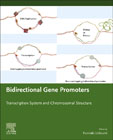
Recent studies in human genetics and in silico analyses have revealed that a number of genes are head-head orientated with other genes or non-coding RNAs. The expression of regulatory element-containing 5'-upstream regions of gene pairs are referred to as bi-directional promoters and are thought to have a key role in biological regulatory mechanisms. For example, tumor suppressor protein-encoding TP53 and BRCA1 genes are head-head bound with WRAP53 and NBR2, respectively. DNA-repair factor-encoding ATM and PRKDC (DNA-PKcs) genes have bidirectional partner NPAT and MCM4, respectively. Surveillance of the human DNA database has revealed that the numbers of DNA repair/mitochondrial function/immune response-associated genes are bound with other genes that are transcribed to opposite direction. The observations may encourage us to investigate in the molecular mechanisms how DNA repair/mitochondrial function/immune response-associated genes are regulated by bidirectional promoters. Not only protein-coding genes, but also quite a few ncRNAs, which play important roles in various cellular events, are transcribed under the regulation of the bidirectional promoters. More importantly, we know that dysregulation in the promoter activity and transcription initiation of genes might cause human diseases. Provides an overview of the process of transcription Explains why there so many bidirectional promoters present in human genomes Covers how the diverse biological functions of (non-coding RNAs) ncRNAs are controlled INDICE: 1. Introductory Chapter: DNA replication and transcription Section I. Biological significances of the bidirectional transcription in eukaryotic cells 2. Mitochondrial function and immune response factor encoding gene promoters 3. DNA replication and repair factor-encoding gene promoters 4. Regulation of miRNA and lncRNA promoters 5. Parameters that determine direction of transcription Section II. Control of bidirectional promoters and the relevance to human diseases 6. Dysregulation of transcription from bi-directional promoters 7. Regulation of cell proliferation by transcription of the bi-directional promoter driven genes Section III. In silico and bioinformatic studies in gene expression system 8. The distal transcriptional enhancers and repressors of bi-directional promoters 9. Bioinformatic analysis and landscape of the human genome 10. Application of the bioinformatics on therapeutics of human diseases Section IV. Evolution of transcription system in eukaryotic cells 11. Retrotransposons and transposable elements that contributed to evolution of transcription regulatory elements 12. Molecular mechanisms that have brought bidirectional gene promoters
- ISBN: 978-0-12-818787-6
- Editorial: Elsevier
- Encuadernacion: Rústica
- Páginas: 210
- Fecha Publicación: 01/09/2022
- Nº Volúmenes: 1
- Idioma: Inglés
